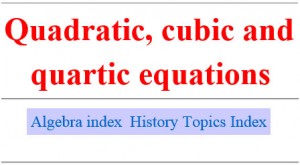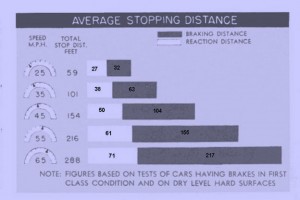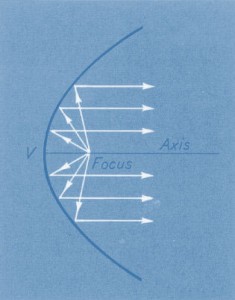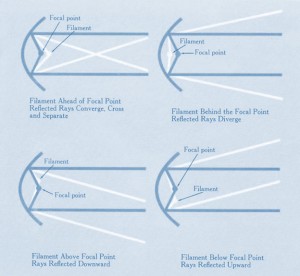1. Introduction
Why Study Polynomials?
Fact #1:
The earliest known people to use polynomials were the Ancient Egyptians and Babylonians around 2000 B.C.. They solved linear, and quadratic equations by using algorithms like completing the square. Even without proper notation, Babylonians used polynomials to solve word problems FOR FUN AND EDUCATION purposes. Although the word problems had little to do with the real world, the problems were written using realistic coefficients and in settings of everyday activity, especially those concerned with defense construction and economic activities. For example, Babylonians had to find lengths of canals dug, weights of stones, lengths of broken reeds, areas of fields, numbers of bricks used in a construction, the original length of a broken reed that was used to measure a field, and flooding fields of several square kilometers to a depth of one finger. (http://it.stlawu.edu/~dmelvill/mesomath/obsummary.html)
For more historical facts on polynomials, visit the following links by clicking on the image:


http://vimagic.de/hope/ http://www-history.mcs.st-andrews.ac.uk/
Fact #2:
Polynomial functions like linear and quadratic relationships are used in driving. Linear functions are used to find the reaction distance (the distance that your car travels from the time that the driver sees the need to do so until his foot hits the brake) and quadratic functions are used to find the braking distance (the distance that the car travels after the brakes are applied until it comes to a stop) and the total stopping distance (the sum of the Reaction Distance and the Braking Distance)
Fact #3:
Fact #4:
A Paraboloid (a quadratic polynomial rotated on its axis of symmetryto create a 3 dimensional object) possess one very unique quality that has many real world applications: any parallel rays (light/sound) will reflect off a parabolic reflector to one single point called the focus and vise versa. As a result, automobile headlights, flashlights, reflective heaters, satellites, solar plants, etc. have all been constructed with this interesting physics and mathematical application in mind. Details of these applications can be found on the site http://www.pleacher.com/mp/mlessons/calculus/appparab.html.
Fact #5:
Polynomial functions have been used by engineers for many useful applications. Some examples are as follows:
- the quadratic equation used by civil engineers to find the vertical curve of pavements (http://street.umn.edu/Road/javahelp/HTML/Vertical_Curve_Calculation.htm).
- the cubic equation to find the volume of water in order to determine the rate of pumping water out of a tank.
- the cubic equation to find how much resistance is in an electrical wire depending upon the volume of electricity running through that wire.
- the cubic function to find heat loss of a heat body of material to the environment after removing from the heat source.
- the polynomial functions for modeling fluid patterns like air and water flow in curved pipes
- the cubic function for approximating magnetic and elastic patterns (https://answers.yahoo.com/question/index?qid=20121008181314AAyl7LJ).
Polynomial functions have also been used in the business world to represent the pattern of the stock market or the increase or decrease in the acquisition cost of an asset held for rental investments.
What is your reason for studying polynomials?
Write one or two sentences stating your reason for studying polynomials in the post below.




